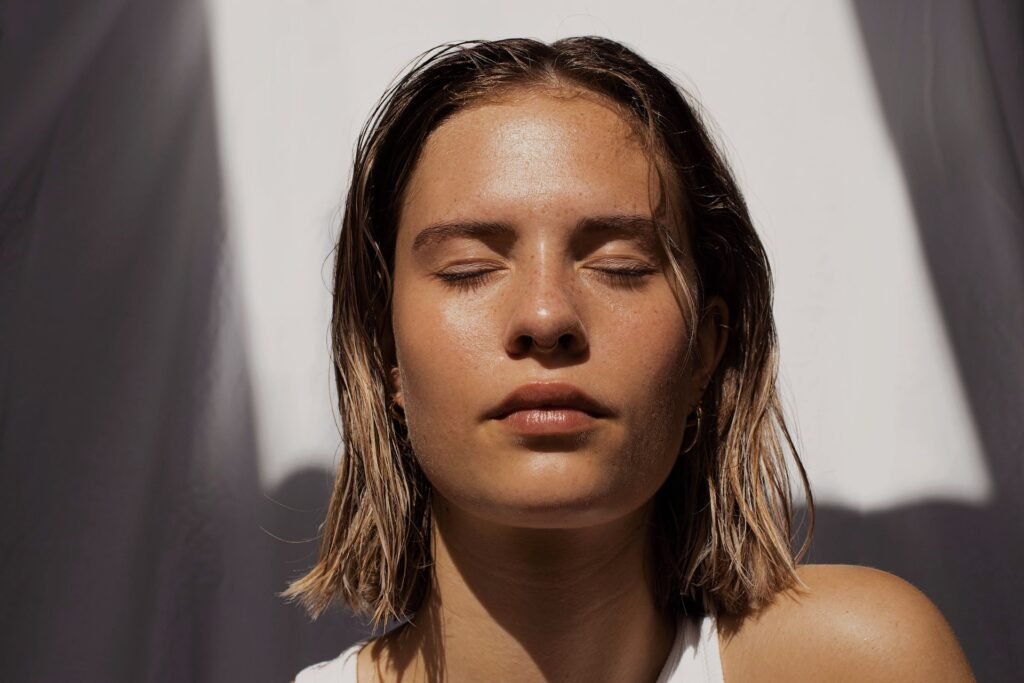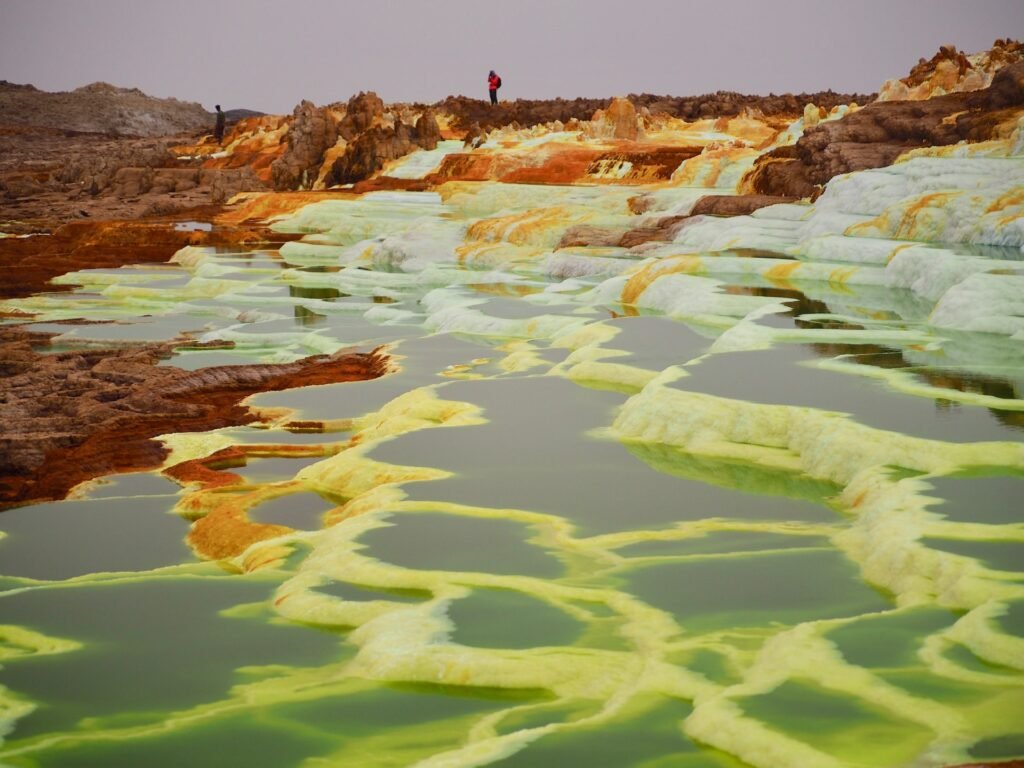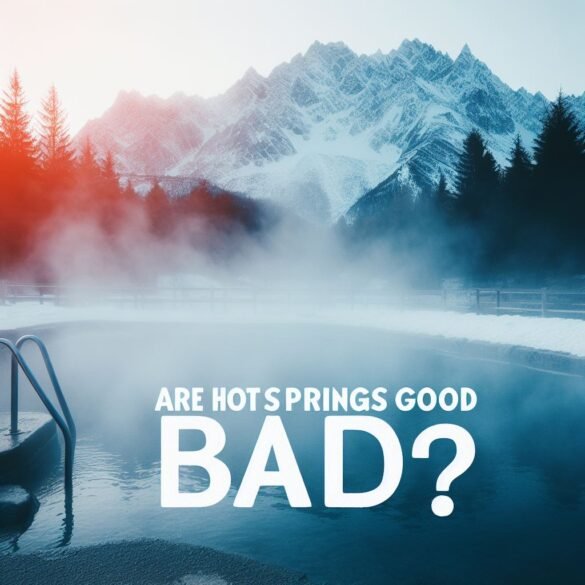Table of Contents
Are Hot Springs Good or Bad for You: Health Benefits and Risks of Natural Hot Springs
Natural hot springs are places where water heated by geothermal activity emerges from the ground. They are found all over the world, and many people enjoy soaking in them for relaxation and health reasons.
But are hot springs good or bad for you? What are the benefits and risks of bathing in natural hot springs? In this article, we will explore these questions and provide some tips on how to make the most of your hot spring experience.
QUICK ANSWER
Hot Springs are usually good for your health but you must exercise caution while you use them.
Understanding Natural Hot Springs
Origins and Distribution of Natural Hot Springs
Hot springs form when water seeps deep into the Earth and circulates back up. The deeper the rocks, the hotter the temperature. In volcanic areas, water may gain heat from contact with hot magma.
All around the world, hot springs are popular tourist destinations, with many a spa sprouting up nearby. One big draw, of course, is their awe-inspiring natural beauty. Another is to soak in the soothing, mineral-rich waters.
The Composition and Impact of Hot Spring Minerals
Because of the unique nature of different hot springs, the exact mineral content of each one will vary to some degrees. Regardless of the differences, most hot springs contain over 13 different minerals: sulfur, silica, calcium, sodium, bicarbonate, boron, magnesium, selenium, potassium, bromine, fluorine, lithium, and iron.
Each of these minerals can have a direct effect on our health and well-being. Each mineral in hot springs has some function in the human body, some more essential than others. The human body can absorb these minerals in trace amounts through skin.
Are Hot Springs Good or Bad for You? Health Benefits of Soaking in a Hot Spring

Healing Powers of Hot Springs: A Deep Dive
People have been soaking in warm or hot springs for thousands of years. The practice is known for promoting relaxation and general wellness, along with a few other health claims.
Hot springs have been used for healing purposes as well as in religious ceremonies. The ancient Romans built private baths and public “Thermae” with a capacity as high as thousands of people. Multiple ancient civilizations believed in the healing powers of mineral geothermal water.
How Hot Springs Boost Blood Circulation
One of the main benefits of soaking in a hot spring is improving blood circulation. The increase in body temperature causes an expansion of blood vessels and an increase in blood flow. This helps to optimize body functions and overall rejuvenation. For example, improved circulation helps relieve the pain that is associated with muscle and joint problems.
A nice long soak in hot springs can also help you get a good night’s sleep. The process of raising your body temperature and then the rapid cooling causes a deeper, more restful night’s sleep.
The Relief of Arthritis Symptoms and Other Pain

Another benefit of soaking in a hot spring is relieving arthritis symptoms and other pain. Many people who suffer from arthritis find that soaking in hot springs can help reduce inflammation and stiffness in their joints. This is because the minerals in the water can help block pain receptors and relax muscles.
The buoyancy of the water also reduces pressure on the joints and supports movement. Additionally, soaking in hot springs can help ease sore muscles after exercise or injury.
Stress Reduction and Other Mental Health Benefits

Soaking in a hot spring can also have positive effects on your mental health. It can help you relax and reduce stress levels by lowering cortisol levels and increasing endorphins.
Cortisol is a hormone that is released when you are stressed or anxious, while endorphins are hormones that make you feel happy and calm. Soaking in hot springs can also improve your mood and cognitive function by stimulating brain activity and enhancing creativity.
Skincare and Aesthetic Benefits of Hot Springs
Another benefit of soaking in a hot spring is improving your skin health and appearance. The minerals in the water can help cleanse, moisturize, exfoliate, and nourish your skin. Some minerals, such as sulfur and silica, can help treat skin conditions such as eczema, psoriasis, acne, and hives.
They can also help heal wounds and prevent infections. Other minerals, such as calcium and magnesium, can help strengthen your bones and teeth. Moreover, some minerals, such as boron and selenium, can help slow down aging by boosting collagen production and protecting against free radicals.

Risks and Side Effects of Soaking in Hot Springs
The Impact of Sulfur and Other Minerals
While soaking in sulfur water is known to provide numerous health benefits, the presence of the chemical can also indicate danger. For starters, while therapeutic, sulfur is much harsher than other minerals present in hot springs and may even trigger allergic reactions in specific individuals.
Sulfur can also cause skin irritation or rash if you soak for too long or too often. Furthermore, sulfur can interact with some medications or supplements that you may be taking. Therefore, it is important to consult your doctor before soaking in sulfur water if you have any medical conditions or allergies.

Risks Related to High Temperatures of Hot Springs
Another risk of soaking in hot springs is related to the high temperatures of the water. At 122°F (50°C), you’ve got a hot spring. At that temperature, you can get a serious burn in about 10 minutes4. But temperatures can reach much higher than that, even surpassing the point of boiling.
In some springs in Yellowstone National Park, for example, magma superheats the water before it rises back to the surface. Because the water is in constant circulation, it doesn’t get hot enough to cause an eruption. At 140°F (60°C), it only takes about 3 seconds to get a serious burn. And in some cases, boiling water in a hot spring can shoot water into the air like a geyser.
High temperatures can also cause other health problems, such as dehydration, heat exhaustion, heat stroke, or fainting. These can be dangerous, especially if you are alone or in a remote location. Therefore, it is important to check the water temperature before you enter, limit your soaking time to 15-20 minutes, and drink plenty of water before and after soaking.
Potential Harm from Microorganisms in Hot Springs
Another risk of soaking in hot springs is the potential harm from microorganisms that may be present in the water. Some hot springs may contain bacteria, viruses, parasites, or algae that can cause infections or illnesses. For example, some hot springs may harbor Legionella bacteria, which can cause Legionnaires’ disease, a severe form of pneumonia.
Other hot springs may contain Naegleria fowleri, a brain-eating amoeba that can cause a fatal infection called primary amoebic meningoencephalitis (PAM). These microorganisms can enter your body through your nose, mouth, eyes, ears, or wounds.
To reduce the risk of getting sick from hot springs, you should avoid submerging your head or swallowing the water. You should also avoid hot springs that are cloudy, smelly, or have signs of algae growth. You should also check the water quality and sanitation of the hot springs before you use them.
Some hot springs may be tested and treated regularly by authorities or owners, while others may be wild and unregulated.
How To Maximize The Benefits and Minimize The Risks of Hot Springs
Best Practices for Soaking in a Hot Spring
To make the most of your hot spring experience, you should follow some best practices for soaking in a hot spring. Here are some tips:
- Do some research before you visit a hot spring. Find out about the location, accessibility, facilities, fees, rules, and regulations of the hot spring. Also check the weather forecast and plan accordingly.
- Choose a hot spring that suits your preferences and needs. Consider the temperature, mineral content, water quality, and scenery of the hot spring. Also consider the size, privacy, and amenities of the pool or tub.
- Prepare yourself physically and mentally for soaking in a hot spring. Eat lightly and hydrate well before and after soaking. Avoid alcohol and caffeine as they can dehydrate you and affect your blood pressure. Wear comfortable and appropriate clothing and footwear. Bring a towel, sunscreen, hat, sunglasses, and other personal items.
- Be respectful and courteous to other people and the environment when you visit a hot spring. Follow the rules and etiquette of the hot spring. Keep your voice low and your music off. Don’t litter or leave any trace behind. Don’t touch or disturb any plants or animals around the hot spring.
- Enjoy your time soaking in a hot spring. Relax your body and mind. Breathe deeply and slowly. Appreciate the beauty and wonder of nature. Feel the warmth and healing of the water.
What to Bring When Visiting a Hot Spring
Here is a list of things you may want to bring when you visit a hot spring:
- Water bottle
- Snacks
- Bathing suit
- Towel
- Flip flops
- Sunscreen
- Hat
- Sunglasses
- Lip balm
- Moisturizer
- First aid kit
- Camera
- Book
- Music player
- Headphones
Safety Precautions for Special Groups: Pregnant Women, Children, etc.
Some people may need to take extra precautions when visiting a hot spring. These include:
- Pregnant women: Pregnant women should avoid soaking in hot springs that are above 100°F (38°C) as they can raise their body temperature too high and cause harm to their unborn baby. They should also avoid hot springs that have high levels of minerals or microorganisms that can affect their health or their baby’s health. They should consult their doctor before visiting any hot spring.
- Children: Children should be supervised by adults at all times when visiting a hot spring. They should not soak for more than 10 minutes or in water that is above 95°F (35°C) as they can overheat or dehydrate easily. They should also avoid hot springs that have high levels of minerals or microorganisms that can irritate their skin or cause infections. They should drink plenty of water and wear sunscreen and hats to protect themselves from the sun.
- Elderly people: Elderly people should be careful when visiting a hot spring as they may have lower tolerance to heat and higher risk of cardiovascular problems. They should not soak for more than 15 minutes or in water that is above 104°F (40°C) as they can experience dizziness, fainting, or heart palpitations. They should also avoid hot springs that have high levels of minerals or microorganisms that can affect their blood pressure or immune system. They should drink plenty of water and monitor their vital signs before and after soaking.
- People with chronic conditions: People with chronic conditions such as diabetes, heart disease, kidney disease, or skin disorders should consult their doctor before visiting a hot spring. They should follow their doctor’s advice on the duration, temperature, and frequency of soaking. They should also avoid hot springs that have high levels of minerals or microorganisms that can worsen their symptoms or cause complications. They should drink plenty of water and take their medications as prescribed.
Conclusion: Key Takeaways
Soaking in a hot spring can be a relaxing and rewarding experience. It can also provide many health benefits, such as improving blood circulation, relieving pain, reducing stress, and enhancing skin health. However, soaking in a hot spring also comes with some risks and side effects, such as skin irritation, dehydration, infection, or overheating.
Therefore, it is important to do some research, prepare yourself, and follow some safety precautions when visiting a hot spring. By doing so, you can maximize the benefits and minimize the risks of soaking in a hot spring.
I hope you enjoyed reading this article and learned something new. Thank you for your interest in natural hot springs. Have a wonderful day! 😊
